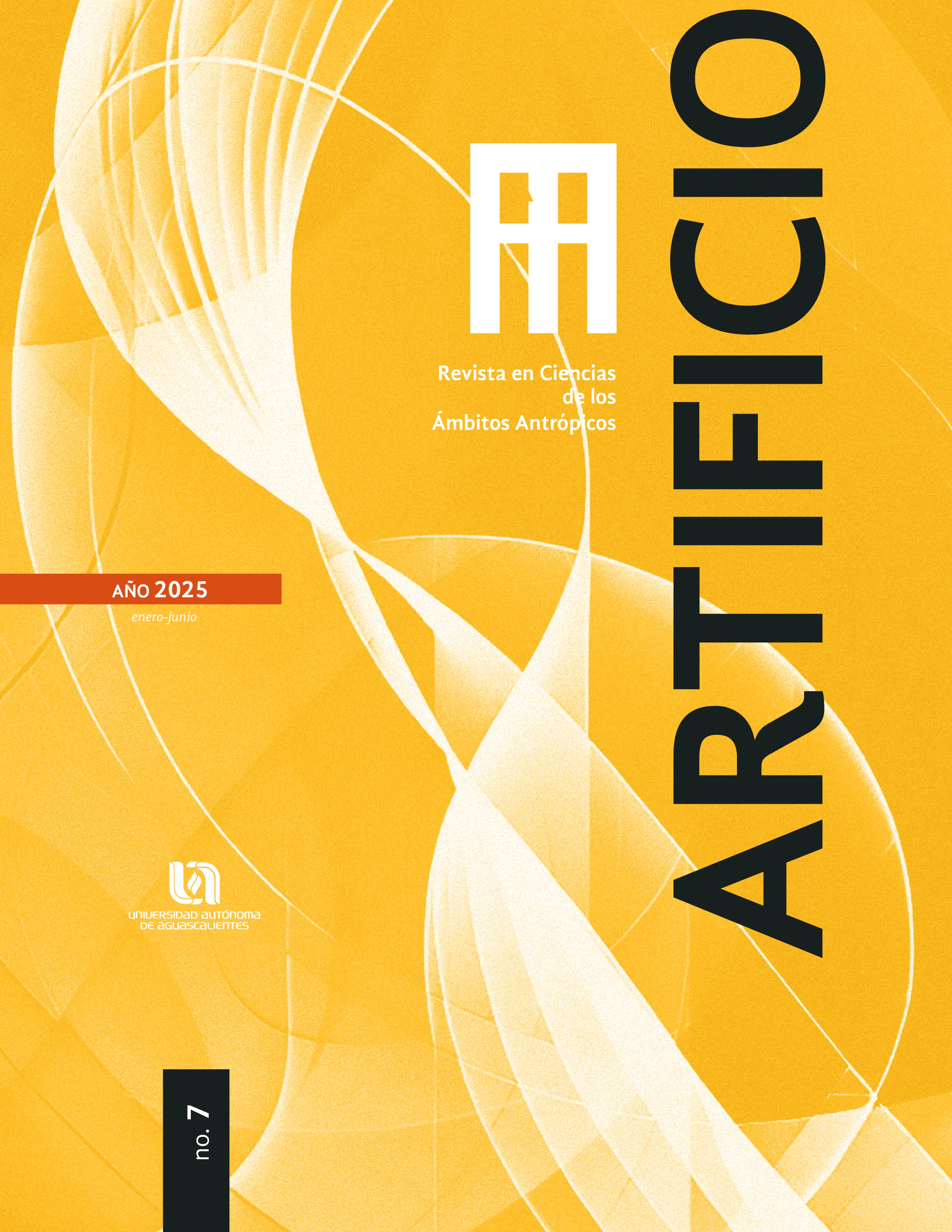Influence of the morphological characteristics of coarse aggregate on the mechanical properties of concrete
DOI:
https://doi.org/10.33064/artificio720257384Palabras clave:
coarse aggregate, mechanical properties of concrete, compressive strengthResumen
The morphology of the aggregates can have a significant effect on the behavior of fresh and hardened concrete. In this study the morphological characteristics (roundness, aspect and fractal dimension) of coarse aggregated (crushed and natural gravel) were obtained throught binary images processed with the Image-PRO software. The morphological properties were correlated with mechanical behavior of hardened (compressive strength) and fresh concrete (slump). The results shows a trend to lower values of roundness, aspect and fractal dimension for natural gravel particles, suggesting smoother contours and lower elongated, comparing with higher values of crushed gravel. Additionally, the shape of coarse aggregated significantly affected the mechanical behavior of hardened concrete, because the concrete cylinders elaborated with same particles (natural gravel) have a trend to higher values and lower standard deviation of compressive strength.
Descargas
Citas
Chan-Yam J. L., Solís-Carcaño R., (2003). Influencia de los agregados pétreos en las características del concreto. Ingeniería, 7 (2), 39-46.
Clark N. N., Maeder A. J., Reilly S., (1992). Data Scatter in Richardson Plots. Particle & Particle Systems Characterization, 9, 9-18.
Clark N., (1986). Three techniques for implementing digital fractal analysis of particle shapes. Powder Technology, 46, 132-139.
Erdogan S. T., Quiroga P. N., Fowler D.W., Saleh H. A., Livingston R. A., Garboczi E. J., Ketcham P. M., Hagedorn J. G., Satterfield S. G., (2006). Three-Dimensional Shape Analysis of Coarse Aggregates: New Techniques for and Preliminary Results on Several Coarse Aggregates and Reference Rocks. Cement and Concrete Research, 36, 1619-1627.
Erdogan S.T., (2005). Determination of aggregate shape properties using X-ray tomographic methods and the effect of shape on concrete rheology, Ph.D. Dissertation, University of Texas at Austin, 312p.
Fernlund J. M. R., (2005b). 3-D Image Analysis Size and Shape Method Applied To the Evaluation of the Los Angles Test. Engineering Geology, 77, 57-67.
Galloway J., (1994). Grading, Shape, and Surface Properties. ASTM Special Technical, Publication No. 169C, Philadelphia, 401-410p.
Hudson B., (1998). Aggregate Shape Affects Concrete Cost. Quarry, Noviembre 1998, 1-4.
Jamkar S. S., Rao C. B. K., (2004). Index of Aggregate Particle Shape and Texture of coarse aggregate as a parameter for concrete mix proportioning. Cement and concrete research, 34, 2021-2027.
Kosmatka S., (1994). Bleeding. ASTM Special Technical, Publication No. 169C, Philadelphia, 89-111.
Legg F. (1998). Aggregates: Chapter 2. Concrete Construction Handbook. Cuarta edición, McGraw-Hill: New York, NY, USA.
León M. P., Ramírez F, (2010). Morphological characterization of concrete aggregates by means of image analysis. Revista Ingeniería de Construcción, 25, 215-240.
Mandelbrot B. B., (1977). The fractal geometry of nature (Vol. 1). New York: WH freeman, 469p.
Masad E., Saadeh S., Al-Rousan T., Garboczi E. J., Little D., (2005). Computations of particle surface characteristics using optical and X-ray computed tomography images, Computational Materials Science, 34, 406–424.
Matias D., De Brito J., Rosa A., Pedro D., (2013). Mechanical Properties of Concrete Produced with Recycled Coarse Aggregates–Influence of The Use of Superplasticizers. Construction and Building Materials, 44, 101-109.
Meddah M. S., Zitouni S., Belâabes S., (2010). Effect of content and particle size distribution of coarse aggregate on the compressive strength of concrete. Construction and building materials, 24, 505-512.
Muller G., (1967). Methods in Sedimentary Petrology. Schweitzerbart´sche Verlagsbuchhandlung, Stuttgart; Hafner, New York, NY, London, 100p.
Neville A. M., Brooks J. J., (2010). Concrete technology. New York, Prentice Hall PEARSON, Second edition, 460 p.
Oluwasola E.A., Afolayan A., Ipindola O. O., Popoola M. O., Oginni A. O. (2020). Effect of Aggregate Shapes on the Properties of Concrete. Journal of civil and environmental studies, 5, 1-10.
Oritola S., Saleh A. L., Modh-Sam A. R., (2014). Comparison of different forms of gravel as aggregate in concrete. Leonardo Electronic Journal of Practices and Technologies, 25, 135-144.
Piotrowska E., Malecot Y., Ke, Y., (2014). Experimental Investigation of the Effect of Coarse Aggregate Shape and Composition on Concrete Triaxial Behaviour. Mechanics of Materials, 79, 45-57.
Quiroga P. N., (2004). The Effects of Aggregates Characteristics on the Performance of Portland Cement Concrete. Ph.D. Dissertation, University of Texas, 368p.
Quiroga P. N., Fowler D. W., (2004). The Effects of Aggregates Characteristics on the Performance of Portland Cement Concrete. International Center for Aggregate research (ICAR), Report No. 104-1F.
Descargas
Publicado
Cómo citar
Número
Sección
Licencia
Derechos de autor 2025 Artificio

Esta obra está bajo una licencia internacional Creative Commons Atribución-NoComercial-CompartirIgual 4.0.
La Revista Artificio proporciona un acceso abierto a su contenido, basado en el principio de que ofrecer un acceso libre a las investigaciones ayuda a incrementar el intercambio global del conocimiento. Artificio no cobra ni cobrará ningún cargo a sus lectores por concepto de suscripción, ni a los autores por enviar, procesar o publicar sus artículos.
Como condición de publicación, los autores acuerdan liberar sus derechos de autor bajo una licencia compartida, específicamente la licencia de Creative Commons Reconocimiento-NoComercial-Compartir Igual 4.0 Internacional
Esta licencia permite a cualquier persona compartir, copiar y redistribuir el material en cualquier medio o formato bajo los siguientes términos:
*Dar crédito al autor del texto
*No hacer uso del material con propósitos comerciales
*No transformar o modificar el material.











